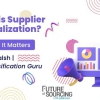Wandering around the Gartner Symposiums at the end of last year, listening to the keynote speakers and chatting with CIOs from some of the world’s leading brands, it is clear that the year’s theme was very apt. “Rise to the Challenge” reflects both the exciting opportunities and the daunting demands on IT departments. At a time when budgets continue to flat line, CEOs are looking to digital transformation as a crucial step to their future business success, and they expect their CIOs to pull out the proverbial IT rabbit to support this goal. Indeed, “Rise to the Challenge” is not just an appropriate topic for CIOs, it is also relevant for the vendor community. Any challenges our customers face, are reflected in new pressures for IT suppliers. While the pressure on CIOs and vendors may be increasing, I was buoyed by the mood among delegates who saw a real opportunity to lead a revolution – both in the way IT helps to transform business, and in how CIOs transform relations with their suppliers. CIOs and businesses around the world are taking control of their IT systems, recognising that there is an opportunity to position the IT Department at the heart of business strategy. Businesses in every sector, whether they are B2B or B2C (no matter how traditional or conservative) are evaluating if and how to digitise their services and engage with customers more fully. One of the conundrums is how they pay for this transformation: how do customers intend to procure and manage their IT systems? Tired of the endless exploitation by traditional enterprise software vendors, customers are seeking ways to reduce on-going expenditure in order to divert funds to projects that will have a genuine positive impact on business. The good news for the third-party support industry is that many of the CIOs I have spoken to see our services as an integral strategy to help deliver this change. The reality is that IT budgets are not broadly increasing, so resources have to be diverted from elsewhere to fund innovative IT programmes. By using a third-party support vendor, CIOs understand they are able to better manage their costs and reinvest their savings in those areas of the business that are of higher strategic importance. This is critical, because of another major piece of the puzzle. IT teams have to choose wisely – which IT systems to evolve to create the foundations for a dynamic, digitally-ready infrastructure. The traditional approach of maintaining all applications on premise is being thrown into question by cloud and subscription-based models. And we all know it is not as simple as “flicking a switch” to migrate to the cloud. In our experience, there is no complete cloud ERP solution available that can fully replace the robust ERP systems from traditional vendors that have matured over 30+ years. In fact, in our experience most licensees are not looking to replace their proven, working core transaction software or “systems of record.” However, cloud applications are enabling customers to deploy innovative new software “around the edges” of their solid core ERP – commonly referred to as “systems of engagement.” Independent support enables the adoption of this “hybrid” model by helping clients shift IT budgets from maintaining current, mission-critical transaction systems, to funding new cloud innovation projects. In my discussions with CIOs, it is clear to me that many no longer consider traditional licensing and maintenance models as a fair value for the money paid; this is a major issue for traditional enterprise software vendors who have relied on this model to fund their businesses for 40 years. I would argue that some vendors are struggling to stay relevant as the economic model changes. For example, our research of Oracle and SAP customers points to a reluctance to migrate to the latest application platforms, such as Oracle Fusion and SAP S/4HANA, mainly because customers struggle to find a justifiable business case for such upgrades to as yet unproven platforms with far less comparable features and functionality as their existing on premise offerings. Customers are frequently not prepared to commit spending the huge sums of money needed to “rip and replace” their current, working systems to adopt immature platforms with no clear business benefit. This vendor push for change is driving even more enterprise software licensees to consider the strategic value of a switch to independent support, allowing them to take control and manage their migration to a digital model – to fund it now, but smartly. We believe a free market and choice is good for the customer and good for the industry overall. Without competition and choice, industry incumbents become less customer-focussed and, in some instances, could take advantage of their customers. I believe the vast majority of customers would agree that the enterprise software support market best serves customers by having a variety of options to choose from. Enterprise software vendors will have to accept how customers choose to buy and maintain their IT infrastructures and it is going to change radically. Customers will no longer choose to pay 22% maintenance fees, which deliver 90% profit for vendors, when they can choose an alternative support model that cost 50% less, and at the same time, delivers a higher, premium-grade level of ERP support. These savings are vital for those customers looking to redirect significant resources to maximise the opportunity of digital, and deliver strategic value back to their business. And this is why Gartner’s Symposium message of “Rise to the Challenge” is not just relevant to CIOs, but is also extremely relevant to IT vendors. As an industry it is incumbent upon us to demonstrate we understand the pressures our customers face and help them evolve in line with what works for their businesses. It is my opinion that as an industry, we cannot force upgrades, we cannot threaten switching off or downgrading support for those who refuse to migrate. We cannot expand our sales through continued software audits. CIOs, who demonstrate their strategic value to the business by both saving money and identifying opportunities to innovate, will be the success story of the next decade. That is only possible if they change the economic model for delivering and maintaining IT systems. And the third-party support industry is ready to rise to this challenge!









